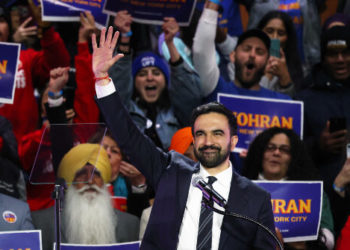On Wednesday, the U.S. Supreme Court will hear oral arguments on whether some, though not all, of President Donald Trump’s tariffs are legal, including some of the ones on Canada; China; Mexico; and, actually, the entire rest of the world.
At issue is the president’s ability to set rates for import duties (taxes, for the layman) under an entirely novel reading of Carter administration-era legislation meant to address sudden national emergencies: the International Emergency Economic Powers Act (IEEPA).
But at heart is something bigger, which is the question of whether the U.S. Constitution, which grants exclusive power over both taxation and foreign commerce to Congress, still matters, or whether the executive branch can set tax rates without recourse to the will of the people or oversight whatsoever.
The reason the case is at the Supreme Court is because a pair of lower courts found the Trump tariffs illegal, and the administration appealed.
What’s really interesting about the case is that nobody knows whether, when the decision comes down (probably early next year), it will be 9-0 for the administration or 9-0 against, or something in between.
The reason that the case is tricky—and attracting so much interest this week—is because Congress has spent decades delegating trade authority to the executive branch. And courts in the past, including the Supreme Court, have allowed some tariffs in some circumstances (such as during the Nixon administration years) under legislation similar to the one in dispute now. So perhaps there is a sweet spot for just how much taxation authority, and for how long, the executive branch can arrogate. Or not.
The other reason the case is tricky, and one argument that the Trump administration has made in its court filings, is that rolling back that legal authority and refunding some or all of the tariffs would be expensive and would leave an even bigger hole in federal revenues than the one blasted into being by Congress earlier this year. (Given the relatively small size of U.S. tariff revenue, libertarians flay that argument with glee.)
One thing the case has done is stimulate friend-of-the-court briefs, legal filings meant to help justices rule on a given case, often on the side of the plaintiffs. There are many of them in this instance, written by different luminaries, from former judges to trade lawyers to historians, and they all strum variations on the same tune: The Trump tariffs, under IEEPA, are illegal, and Congress made that clear once and could do so again. If only it were that simple.
It is true, in the wake of former President Richard Nixon’s use of tariffs under precursor legislation in 1971, that Congress laid down specifically the ways in which the executive could regulate the duties on imports, and by how much, and for how long. That was the 1974 Trade Act, and there is one part of it—Section 122—that has been circled in red pen by the current administration, since it could be a fallback. (More on that later.)
But the Supreme Court has already, in a way, ruled on the use of tariffs under the “national emergency” legislation that Nixon invoked. That case, United States v. Yoshida International, Inc., or just Yoshida, as it is known, upheld the executive branch’s right to levy tariffs, though limited in scope and duration, under emergency powers.
Whether the fact that the U.S. economy buys goods from foreign countries and imports foreign capital, and has done so for decades, constitutes a national emergency—which is what triggered the Trump administration’s broadest tariffs—is a different question for this court to decide.
The current case ultimately rests on two words, not even conjoined in the 1977 IEEPA legislation, that give the president the ability to oversee the “regulation” of “importation.” “Tariffs” is not a word that ever appears in that act, which otherwise gives sweeping powers to the executive branch and has been used scores of times to levy sanctions and the like.
But the Trump administration argues that regulating imports necessarily includes taxing them, not just banning them. The plaintiffs, and nearly all of those friends of the court, argue that if Congress wanted IEEPA to allow tariffs, it would have written the word “tariffs” somewhere in the act.
However, other than perhaps clarifying whether the Constitution and acts of Congress are still valid, the Supreme Court’s ruling in the case of Trump’s tariffs probably won’t much dent the protectionist wall the Trump administration is building.
There are plenty of court-tested legal authorities, some already used for other tariffs (such as those on imports of steel, or auto parts, or lumber, which the administration says pose threats to U.S. national security). There is, of course, the 1974 Trade Act, though that puts a ceiling and a time limit on the tariff rate. There is also that original legislation from the years of President Herbert Hoover, which we know as Section 338 of the 1930 Trade Act, which offers carte blanche for hefty tariffs for little reason other than pique.
So even if the Supreme Court, which has been deferential to Trump in the past, draws the line on his use of IEEPA for tariffs, it’s not likely that the import taxes will just go away. Wednesday should still be interesting, anyway.
The post What the U.S. Supreme Court Tariffs Case Is Really About appeared first on Foreign Policy.




